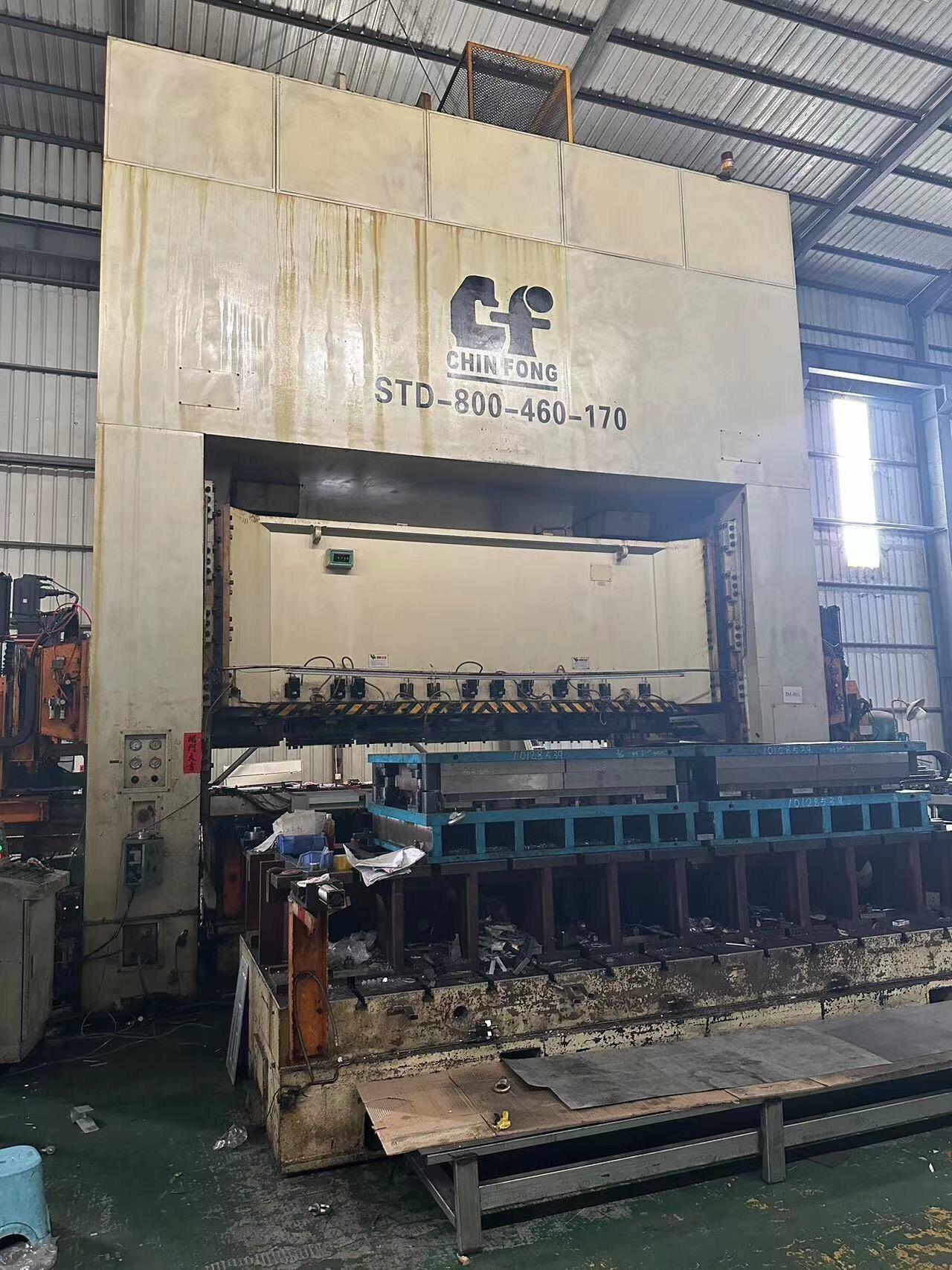What are the key factors to pay attention to when purchasing second-hand Jinfeng punching machines?
When purchasing a second-hand Jinfeng punch press, the following key factors should be noted:
1. Equipment performance testing
Accuracy check
-Focus on checking the perpendicularity between the slider and the workbench, the flatness of the workbench, and the accuracy of the slider stroke. Professional tools such as a dial gauge can be used for measurement. Under normal circumstances, the perpendicularity error between the slider and the worktable should be controlled within ± 0.1mm/300mm stroke, and the flatness error of the worktable should be less than 0.1mm. These precision indicators directly affect the quality of stamped parts.
-Check if the stamping accuracy of the punch press is stable. By testing some standard specimens, observe whether the dimensional accuracy and shape accuracy of the stamped parts meet the requirements, and whether there are significant fluctuations in accuracy during the continuous stamping process.
Performance evaluation
-Conduct an air transfer test and pay attention to the sound of the punching machine during operation. Under normal circumstances, the sound should be smooth and regular. If there are abnormal friction, impact, or vibration sounds, it may indicate wear, looseness, or other faults in the internal components.
-Check the movement speed and smoothness of the slider. The movement speed of the slider should comply with the nominal parameters of the equipment, and it should move smoothly throughout the entire stroke without any lag or jumping phenomenon. Meanwhile, observing the braking performance of the punch press, a good braking system should be able to stop the slider from moving in a short period of time.
Stress testing
-If conditions permit, conduct a pressure test on the punching machine to ensure that it can achieve the nominal punching tonnage. Pressure sensors and other devices can be used to measure the actual stamping pressure. Insufficient stamping pressure may prevent the completion of stamping work on thicker or harder materials.
2. Equipment quality inspection
Appearance inspection
-Carefully inspect the punch press body for any obvious deformation, cracks, rust, or paint peeling. The integrity of the body structure is crucial for the stability and service life of the punch press, and serious appearance issues may indicate that the equipment has been affected by improper use or harsh environments.
-Check if the protective devices of the punch press, such as guardrails and light curtains, are intact. Protective devices are important facilities for ensuring the safety of operators, and damaged protective devices need to be repaired or replaced in a timely manner.
Component inspection
-Focus on inspecting the wear of key components such as crankshafts, connecting rods, sliders, and guide rails. For example, rail wear can cause the slider to move unevenly, increasing maintenance costs. You can manually move the slider to feel the smoothness of its movement and determine the degree of wear on the guide rail. At the same time, check the working status of the clutch and brake, which are related to the start, stop, and safe operation of the punch press.
3. Equipment history investigation
Service life and frequency
-Understanding the service life of punching machines, generally speaking, punching machines with shorter service life have relatively better performance and accuracy. At the same time, inquire about the frequency of device usage, such as the number of stamping operations per year. If the device is used too frequently, it may lead to increased wear and tear on critical components. Usually, the economic service life of a punch press is around 10-15 years, but the specific situation also depends on factors such as equipment brand and maintenance.
Maintenance and upkeep records
-Require the seller to provide maintenance records of the equipment, including the time and content of regular maintenance, as well as information on the main components replaced. Good maintenance can extend the service life of equipment and improve its reliability. If the equipment lacks regular maintenance, it may hide various potential faults.
Repair history
-Inquire whether the equipment has experienced any major malfunctions, such as crankshaft damage, electrical system failures, etc. Understand the cause of the malfunction, repair time, and the recovery situation after repair. If the equipment has frequent maintenance records, especially those involving critical components, it may affect the performance and stability of the equipment.
4. Equipment configuration and accessory inspection
Standard configuration integrity
-Check if the standard configuration of the punch press is complete, including motor, control cabinet, lubrication system, cooling system, etc. Ensure that these configuration functions are functioning properly, for example, the lubrication system should be able to provide lubricating oil to critical components, and the cooling system should effectively reduce the temperature of the equipment during operation.
-Check if the mold installation system of the punch press is intact, including the mold clamping device, positioning device, etc. The accuracy and reliability of the mold installation system directly affect the quality of stamped parts and the service life of the mold.
Attachment situation
-Ask if the equipment comes with any special accessories, such as automatic feeding devices, waste collection devices, etc. These accessories can improve the production efficiency and processing convenience of the punch press, and second-hand punch presses with practical accessories have higher value.
5. Price and after-sales guarantee
Price evaluation
-Before purchasing, conduct research on the prices of punching machines of the same brand, model, and similar color in the market. Consider factors such as device performance, service life, and configuration to evaluate whether the price quoted by the seller is reasonable. To avoid losses due to excessively high prices, while also being alert to potential issues with low-priced equipment.
after-sale service
-Understand whether the seller provides after-sales service, such as the warranty period, warranty scope, and repair response time of the equipment. For second-hand equipment, some sellers may provide a certain period of warranty service, which can provide buyers with certain protection. At the same time, ask the seller if they can provide technical support, including equipment operation training, troubleshooting guidance, etc.



